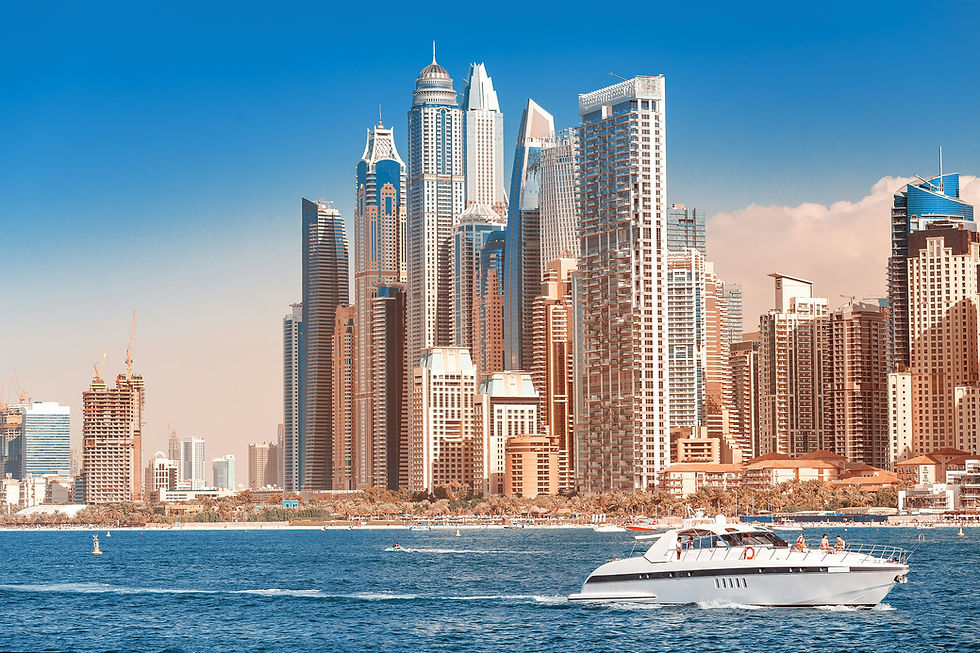British Urban dockyards Coastal towns: Sustainability and Stakeholder Trust. WeValue Strategy IPact.
- Peakline Mastery

- May 8
- 3 min read
Updated: Jun 16

As global trade expands and infrastructure investment accelerates, urban planning has become pivotal not only to economic growth—but to environmental and social transformation. Yet too often, these massive infrastructure projects prioritize engineering efficiency over long-term impact. That’s why when a major private transport firm in the UK were looking for an innovative approach, they weren’t just seeking another project partner—they were looking for a way to redefine what responsible infrastructure looks like.
Their goal? To expand strategically located urban planning, increasing efficiency in transport throughout and streamlining operations. But beyond that, they wanted to align their expansion with the ESG expectations of international investors, regulatory agencies, national government, and the communities they serve. By understanding, considering, and implementing the values of these stakeholders, to be included in the national urban planning project.
The task was clear: integrate ESG into every layer of planning, execution, and measurement—without compromising business performance. What followed was a multi-phase transformation that reshaped not only the project’s structure, but its identity.
Step One: Comprehensive ESG Stakeholder Analysis
Using the WeValue Framework, created by the scientific engineer Marie Harder, from the directive department of Environmental Management from Fudan University in Shanghai, China. The analysis began by mapping all relevant stakeholders, as extensively and deep as possible. Unlike traditional infrastructure assessments that focus on technical teams and investors, including:
Internal teams: engineers, project managers, finance, procurement, economists.
External groups: local municipalities, national ministries, environmental NGOs, suppliers, and local communities.
From there, an ESG intrinsically and dock assessment was conducted. This involved interviews, interactive workshops, field visits, and data analysis to understand how environmental, social, and governance factors influenced stakeholder expectations and long-term risk.
Step Two: Environmental Integration
The environmental footprint of a transport infrastructure is significant—from emissions during mobility and construction to long-term docks-coastlines disruption.
It introduced sustainability audits and scenario-based carbon forecasting into the engineering phase. Working on a multidimensional approach from the private sector client, to governments, international regulations, and local community values:
Design operational layouts that minimize emissions.
Introducing renewable energy options for onsite infrastructure.
Launch a marine biodiversity buffer program, reducing the impact on local habitats.
By incorporating these insights early, the client reduced projected environmental penalties and gained favorable regulatory standing—paving the way for smoother permitting.
Step Three: Social Inclusion and Community Partnership
Dockyards are not isolated megaprojects—they are deeply embedded in their local contexts. Our social inclusion module focused on three key areas:
Labour rights and working conditions: WeValue approach facilitated workshops with dockworkers to co-design fair labour practices, resulting in a new grievance redress system and enhanced safety protocols.
Local employment: Through the support for the client on developing hiring plans that prioritized local talent, especially youth and underrepresented groups.
Community engagement: with focus groups, we surfaced long-standing community concerns—noise, traffic, access—and co-developed mitigation strategies with the project team.
The result was a social license to operate that extended well beyond compliance. It created trust.
Step Four: Governance, Transparency, and Reporting
To make ESG actionable, an integration into governance through:
The creation of an internal ESG committee tied to executive KPIs
A real-time digital dashboard for tracking environmental and social metrics
Public ESG reports aligned with GRI and TCFD frameworks
These tools ensured transparency both internally and externally, positioning the company for ESG-linked financing opportunities.

Impact Snapshot
By the end of the engagement, the transformation is visible—not just in theory, but in measurable outcomes: As an overview of the wider effects that could be transferred to your company or government are:
$3M in projected annual environmental cost savings
$600K reduction in social risk liabilities
$2.5M in new ESG-linked revenue streams through financing and partnerships
30% emissions reduction in logistics operations over 5 years
Full compliance with international ESG certifications, improving investor confidence and government relations
What This Means for the Sector
This project is not just about one dockyard—it’s a blueprint for how logistics infrastructure can evolve from high-risk, compliance-heavy assets to ESG-aligned growth engines.
It shows how stakeholder mapping, AI-assisted analytics, inclusive design, and impact-driven governance can be deployed to transform not only perception—but performance.
Peakline’s Role: Designing with Vision, Delivering with Precision
At Peakline, we don’t apply cookie-cutter ESG checklists. We build frameworks that work for your reality—sector-specific, community-sensitive, and investor-smart.
From stakeholder engagement to technical design, from ESG valuation to KPI creation, we brought the full weight of our interdisciplinary team to ensure this project delivered value in every dimension: economic, environmental, and ethical.
This isn’t just sustainability. It’s strategic ESG by design.




Comments